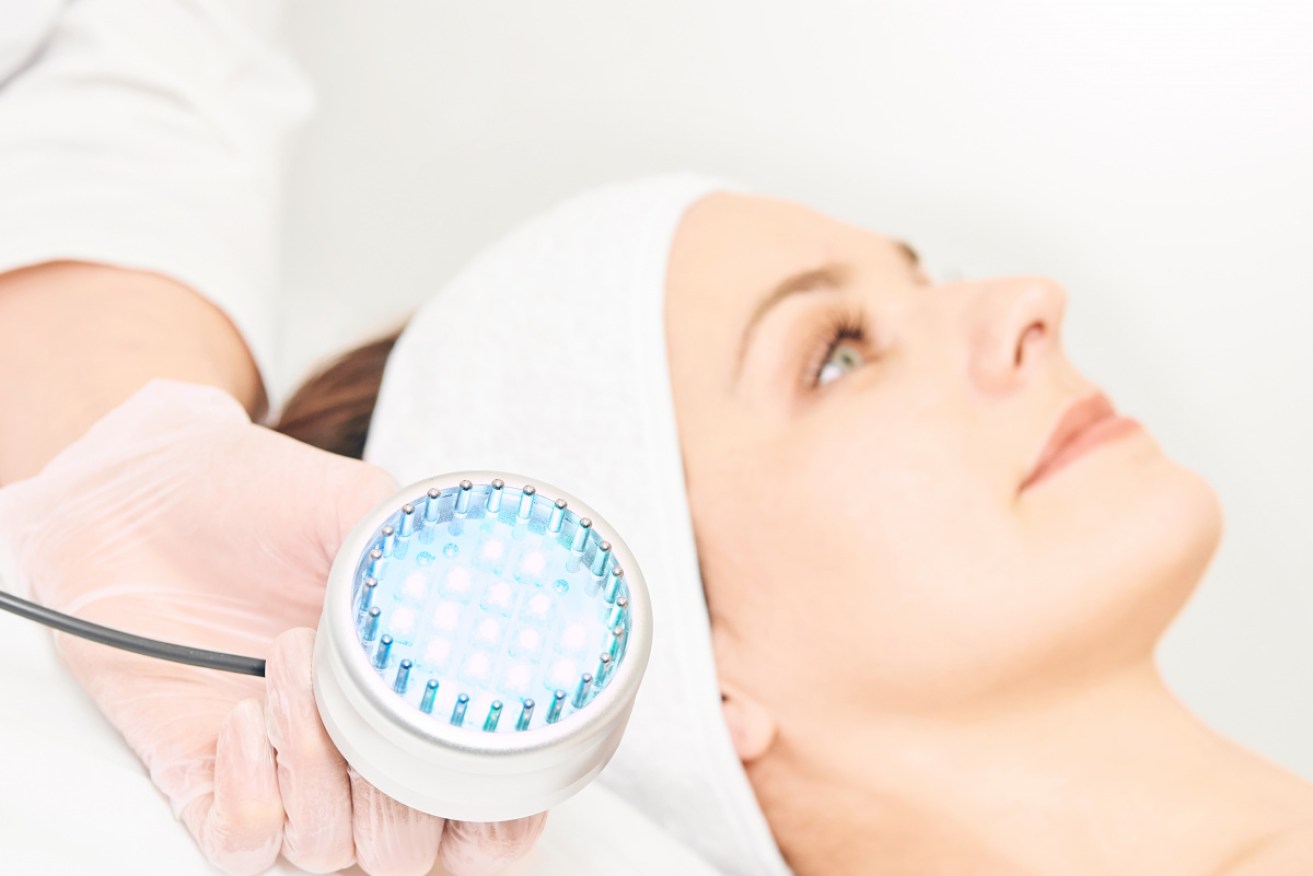Deep red-light exposure ‘significantly improves’ declining eyesight


Deep red light therapy is commonly used as a cosmetic treatment. Scientists say it improves declining vision. Photo: Getty
Researchers have found that declining colour vision – which happens to all of us – can be improved by an average 17 per cent when patients are exposed to three minutes of deep red light.
The improvement occurs only when the treatment, which takes three minutes, is given in the morning – and the benefits were consistently found to last a week.
The study has been published in Nature.
The scientists, from the University College of London (UCL), are now working with a lighting company to develop an affordable LED device that would allow the treatment to be routinely done at home once a week.
What happens to our eyes when we age ?
As we age, our lenses become less flexible. This makes it difficult to focus on close objects, a condition called presbyopia. The solution is easy enough: reading glasses.
We also experience reduced pupil size because the muscles that control pupil size lose strength over time.
The pupil is the opening within the iris. This is where light passes through to the lens and is then focused onto the retina.
This reduction in pupil size, called miosis, explains why people in their 60s need three times more ambient light to read by than people in their 20s. The solution: sit near a lamp.
Miosis also explains why older people are dazzled by light and glare when emerging from a darkened room into sunlight. Solution: Spectacles with photochromic lenses and anti-reflection coating.
Reduced accuracy in colour perception. When this is due to discoloration of the lens, cataract surgery can help.
But we naturally lose colour perception and contrast because cells in the retina decline in sensitivity as we age, causing colours to become less bright and the contrast between different colours to be less noticeable.
It’s this problem that the new therapy using deep red light addresses.
What happens in the retina?
Our colour visions uses a lot of energy which is produced in our cells by its powerhouse, the mitochondria. This is why mitochondrial density is at its greatest in the retina’s photoreceptor cells, more than anywhere else in the body.
And it’s why the retina ages faster than other organs. This generally begins when we’re 40, when the mitochondria produces less adenosine triphosphate (ATP), a major source of cellular energy.
Subsequently 30 per cent of central rods “progressively die, and while cones remain, they have reduced functionality”.
The good news is that mitochondria have “specific sensitivities to long wavelength light influencing their performance”.
Longer wavelengths spanning 650 to 900nm improve mitochondrial performance to increase energy production, the authors say.
What’s the best frequency?
This has led to a lot of experimentation by the UCL scientists and others – firstly in mice, bumblebees and fruit flies – to determine the most effective wavelength of deep red light.
The new study, in 20 human volunteers – aged between 34 and 70 – finds that exposure to 670 nanometre or long wavelength deep red light effectively switches on the retinal mitochondria.
Using a provided LED device all 20 participants were exposed to three minutes of 670nm deep red light in the morning between 8am and 9am.
Their colour vision was then tested again three hours post exposure and 10 of the participants were also tested one week post exposure.
On average there was a ‘significant’ 17 per cent improvement in colour vision, which lasted a week in tested participants; in some older participants there was a 20 per cent improvement, also lasting a week.
“Using a simple LED device once a week, recharges the energy system that has declined in the retina cells, rather like recharging a battery,” said lead author, Professor Glen Jeffery.
Morning exposure was “absolutely key” to achieving improvements in declining vision.
The researchers had found previously, in flies, that mitochondria have “shifting work patterns and do not respond in the same way to light in the afternoon”.
Professor Jeffery said: “This simple intervention applied at the population level would significantly impact on quality of life as people age and would likely result in reduced social costs that arise from problems associated with reduced vision.”








